explore
Coastal Desert - Resources
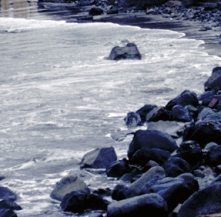
For 7,500 years prior to the development of agriculture, coastal peoples settled along the shorelines. Using small watercraft, they exploited the rich marine resources supplied by the Humboldt current. The sea provided the major source of protein, where fish, including anchovies, shellfish, seabirds and mammals were exploited, and they also gathered wild fruits and cotton from the river valleys.
Image: A rocky portion of the shoreline along Peru's northern coast.
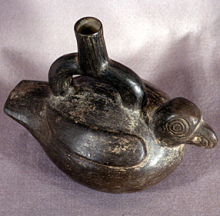
Hundreds of kilometres away from the coast, on the other side of the Andes, lay the tropical lowlands. These humid jungle areas were inhabited by independent peoples who widely traded exotic produce to highland and coastal cultures. Jungle goods such as coca leaves, honey, wood, medicinal plants, and tropical bird feathers, became increasingly important for both coastal and highland cultural activity. Tropical bird feathers were valued for adornment and were woven into the very fine garments worn by Andean elites.
Image: Chimú stirrup spout vessel, c. A.D. 900-1450, depicting a parrot, a bird found in tropical forests far from the arid north coast. (Private Collection).
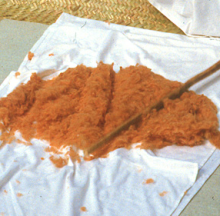
Fibre enabled these early peoples to fish with fishing nets and cords which they fashioned by looping, knotting and braiding techniques from the cotton they gathered. Cotton was also used to create carrying cloths and protective garments. They grew tortora reeds, which they tied in bundles to make watercraft, and used gourds for net floats. By 2500 B.C. there were permanent villages at Huaca Prieta, where patterned twined cotton textiles were found that date to 2300 B.C. Textile materials and techniques underwent development for thousands of years before clay was first fired in this area. The progression of plant fibre basketry and cordage, to cotton plain weave, to patterned textiles took place over the first 6,000 years of the Andean textile tradition.
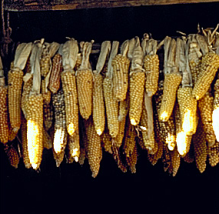
Coastal peoples moved their settlements inland around 1800 B.C., motivated by a desire to grow rather than collect cotton. They also grew maize, beans, squash, gourds, peanuts and chili peppers. Additional protein sources were meat from domesticated animals including guinea pigs and ducks, as well as from game animals.
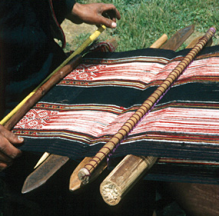
Heddle weaving is a more efficient weaving technology (where the heddle lifts some of the warp threads to enable the wefts to pass through them more easily) and it made possible the production of vast quantities of cotton cloth. Textile technology was based on few materials, sticks tied together to make the backstrap loom, the frame loom and the upright loom. Simple combs, needles, spindles and bobbins were used to move the threads.

From the Early Horizon on (1400 - 400 B.C.), textiles were a highly valued commodity, and served as indicators of status, burial goods, ritual offerings, badges of office, and household decorations. While early coastal textiles were exclusively cotton, from this time, coastal peoples traded cotton, dried fish and maize with highland peoples to obtain wool for weaving and other highland products.